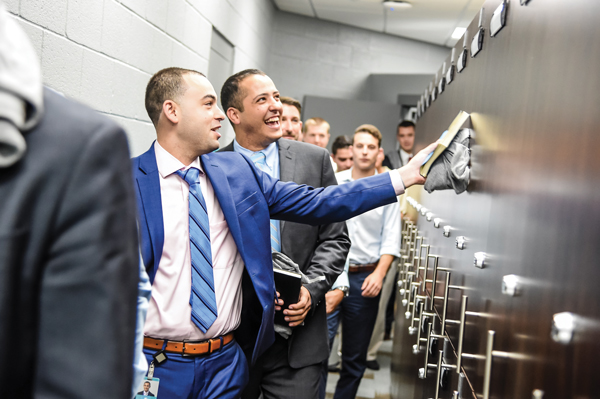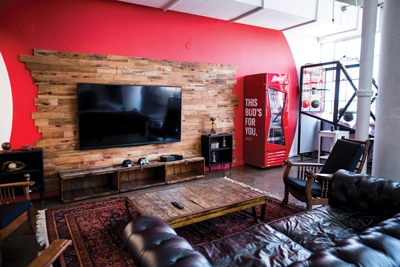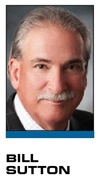During the course of my consulting activities, I have had the opportunity to visit a variety of sports organizations over the past year and have observed the impact that space and appearance have not only on staff morale and retention, but also in recruitment. Simply stated, much like facilities are important to prospective players, the appearance of the workplace and the related amenities are also very important to young workers.
Films like “The Internship” provided an inside look at unique work spaces and benefits afforded to workers at Google, and some of the other Silicon Valley firms. The film also conveyed the impression regarding workers that perhaps you could be productive not sitting in a cube all day, and maybe it would be nice to have meals provided on-site as well as a gym, dry-cleaning services and so forth. Silicon Valley firms are always competing for top talent so perhaps what they have done, providing transportation services to and from home and offering medical services on-site along with yoga classes and personal training, might be perceived as “over the top,” but while the specifics may be, the intention is clearly not. And that intention is attracting and retaining the best talent — because as we all know — talent conquers all.
 |
Dolphins employees see gym lockers with their names on them for the first time. The team sees its workspace as an extension of its culture.
Photo by: MIAMI DOLPHINS
|
One interesting modification to the work environment is the simple aspect of allowing dogs in the workplace. While obviously the dogs need to be vetted and socialized — and should be kept away from people with a fear of dogs — the positive aspects are significant. Employees focus on the task at hand and don’t worry about leaving early or running home at lunchtime to let their dog out or worry about the high cost of pet care. Having observed dogs in the workplace at The Players’ Tribune and, appropriately enough, at LeadDog, there seems to be a therapeutic stress relief element for non-dog owning employees at play as well. “Communication and teamwork are the core of everything we do at The Players’ Tribune, and our workplace encourages a comfortable, open and trusted culture,” said Jared Schoenfeld, vice president of brand partnership sales.
One venue that really impressed me was the Minnesota Timberwolves and Lynx’s new practice facility, The Courts at Mayo Clinic Square. Not only is it a basketball practice facility, it is the home for all team business operations as well. What impressed me walking in was the “agency feel and look” of the space. While there were cubes and offices, the layout was more integration than isolation. There were traditional meeting rooms as well as informal comfortable spaces where one could go with their laptop or with a group of co-workers to meet and talk without the formality of a table and hard chairs. The space was originally a downtown mall with a movie theater, and the team retained one of the movie theaters during the remodeling to use as an all-staff meeting area as well as an area to make presentations to existing and potential partners.
“We designed the space to meet the demands of a modern work environment and a staff that is increasingly comprised of millennials,” aid Timberwolves and Lynx CEO Ethan Casson. “We wanted to emphasize cross-departmental collaboration and specifically created comfortable open areas to work from, host meetings or enjoy a break. We know young professionals today are looking for uniqueness and connection so our offices focus on meeting that need. Free beverage coolers, hoops on our practice courts, a full-sized movie theater and large two-story windows that let in natural light and connect our staff to a vibrant downtown are all part of our strategy to recruit and retain the best staff in sports.”
 |
The Players’ Tribune offices include areas that promote communication and collaboration.
Photo by: THE PLAYERS’ TRIBUNE
|
The Miami Dolphins recently installed a gym, coffee bar and an employee lunch program in the club spaces that are usually only used during game days. The Dolphins offer several lunch options and employees have a payroll deduction program for $5 per day for lunch. Part of the rationale for offering the lunch program is due to the absence of restaurant options near Hard Rock Stadium. When the Dolphins were relocated to downtown Las Olas while the stadium’s canopy roof system was installed, employees had numerous walkable options and a nearby coffee shop became a place for departmental meetings. Thus, the Dolphins saw the value in implementing the coffee bar and lunch program and have seen it as not only an informal meeting space, but a real opportunity to break down departmental silos by encouraging people to eat lunch or grab a coffee with someone from another department that they might not be familiar with — creating an organizational feel and a broader sense of community.
But great working space isn’t a panacea in and of itself. How the space works needs to be part of the organizational culture and values. Tom Garfinkel, Dolphins president and CEO, sums it up very well:
“Culture is a function of the 100 decisions a day that leadership makes and whether or not those actions match the rhetoric. We try and be a results-based culture with heart. I believe that talented people want to be in an environment where they can learn and accomplish results with a team of other motivated, talented people, and also in one where they know that the leadership genuinely cares about them as human beings. The gym, the lunches, and the coffee bar and happy hours are fun things but the real proof is trying to build an organizational culture where an individual can be part of something special with a great team and also one where they know that organization cares about their growth and development.”
Bill Sutton (wsutton1@usf.edu) is the founding director of the sport and entertainment business management MBA at the University of South Florida and principal of Bill Sutton & Associates. Follow him on Twitter @Sutton_ImpactU.






